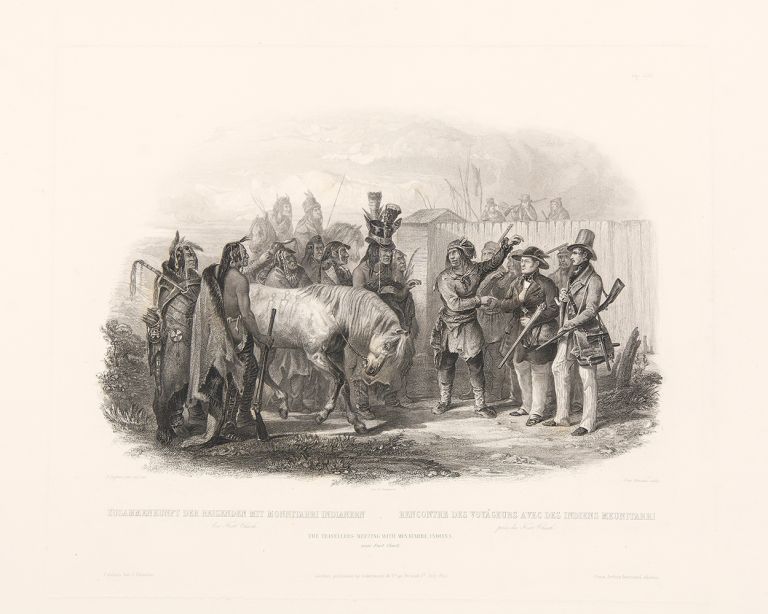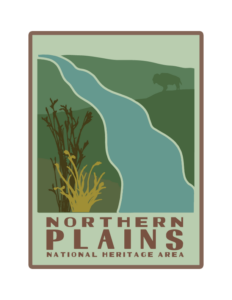Traders & Artists
In 1738 Pierre Gaulitier de Varennes Sieur de la Verendrye, a French-Canadian explorer and trader seeking the western sea, organized an expedition to meet the inhabitants of the Northern Plains whom he called Mantannes.
La Verendrye’s party included 25 Assiniboine he met along the way who, eager to join the French trade, led him to meet the Mandan. La Verendrye wrote the first known report by a European of the Mandan and their ways:
There were about one hundred and thirty [houses]. All the streets, squares, and cabins are uniform in appearance; often our Frenchmen would lose their way in going about. They keep the street and open spaces very clean; the ramparts are smooth and wide; the palisade is supported on cross pieces mortised into posts fifteen feet apart with a lining. For this purpose, they use green hides fastened only at the top in places where they are needed. As to the bastions, there are four of them at each curtain well flanked. The fort is built on an elevation in mid-prairie with a ditch over fifteen feet deep and from fifteen to eighteen wide. Entrance to the fort can only be obtained by steps or pieces [of wood] which they remove when threatened by the enemy. . . Their fortification indeed has nothing savage about it (Fenn 2014). Can we find an image depicting?
LaVerendrye noted he was impressed by the quantity and quality of trade which included: . . . coloured buffalo robes, deer, and buck skins, carefully dressed and ornamented with fur and feathers, painted feathers and furs, worked garters, head-bands, girdles. Of all the tribes they are the most skillful in dressing leather, and they work very delicately in hair and feathers . . . They are sharp traders. . . (Fenn 2014).
As 1781 dawned, the smallpox epidemicreached the Mandan and struck down 80% of the population—of perhaps 25,000 people with fewer than 5,000 surviving. In the aftermath, the Mandan moved north, and clustered together with the Hidatsa in the Knife River Villages.
Smallpox paid deadly visits again to the Mandan and Hidatsa in 1802-03, and yet again in 1837 when the two tribes became allies with the Arikara to strengthen their communities.
Over the next 40 years French-Canadian traders made their way to the Mandan, Hidatsa, and Arikara villages, followed by American traders. George Catlin, an American painter, writer, and traveler, was the first white man to depict Plains Indians in their native territory. Following closely behind Catlin, the German explorer Prince Maximilian zu Wied-Neuwied came by steamboat and stayed from 1832 to 1834, as well as Swiss-French artist Karl Bodmer. Today, Bodmer’s paintings are recognized as among the most accurate images of Native Americans in their homelands, their artifacts and culture, and the scenery of the “old west.”




